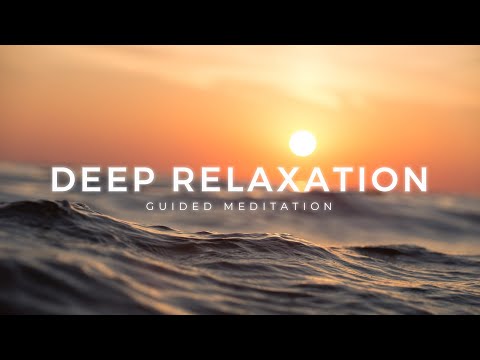As someone who has experienced the stormy waves of anxiety, I know how overwhelming it can be to navigate through the turbulent waters of our minds. It’s like being caught in a whirlpool, constantly being pulled under by fear and worry.
But fear not, for I have discovered five unbeatable breathing strategies that can instantly calm your anxiety and bring you back to safe shores. These strategies are like life rafts, ready to rescue you from the treacherous depths of anxiety.
Through simple techniques like the 4-7-8 breathing pattern, engaging your diaphragm, finding your breath’s cadence, and practicing mindfulness, you will gain the power to navigate any storm with grace and tranquility.

So, let’s embark on this journey together and discover the incredible power of our breath to find safety and peace in the midst of chaos.
Understanding Anxiety and Breathing Power
When I experienced anxiety, I discovered the incredible power of my breath to bring me calm and relief. Anxiety can feel overwhelming and paralyzing, but it’s important to remember that you have the ability to regain control.
Breathing techniques can be a powerful tool in managing anxiety. Deep breathing exercises, such as diaphragmatic breathing, can activate the body’s relaxation response and help reduce anxiety symptoms. Inhale slowly through your nose, allowing your abdomen to rise as you fill your lungs with air. Exhale slowly through your mouth, releasing any tension or stress with each breath.
The 4-7-8 Technique: Simple Breathing Pattern
To delve deeper into the power of breathing techniques for anxiety relief, let me introduce you to the simple yet effective 4-7-8 technique. This technique is designed to help you calm your anxiety instantly and promote a sense of safety and well-being.

Here’s how it works:
- Find a quiet and comfortable place to sit or lie down.
- Close your eyes and take a deep breath in through your nose for a count of 4.
- Hold your breath for a count of 7.
- Exhale slowly through your mouth for a count of 8, making a whooshing sound.
Repeat this pattern for a few minutes or until you start feeling more relaxed.
The 4-7-8 technique is a powerful tool that can help you regain control over your breathing and reduce anxiety in any situation. Give it a try and experience the calming effects for yourself.
Diaphragmatic Breathing: Engage Your Diaphragm
Now, let’s explore the next breathing technique, where I’ll guide you through the process of engaging your diaphragm for anxiety relief.

Diaphragmatic breathing is a powerful tool that can help you calm your mind and body in moments of anxiety. By consciously engaging your diaphragm, you can promote deep, slow breaths that activate your body’s relaxation response.
To engage your diaphragm, start by finding a comfortable position, either sitting or lying down. Place one hand on your chest and the other hand on your abdomen. As you inhale, allow your abdomen to expand, feeling the breath fill your lower lungs. Exhale slowly, feeling your abdomen gently contract.
Repeat this process, focusing on the sensation of your breath moving in and out. Engaging your diaphragm in this way can bring a sense of safety and calmness, allowing you to navigate through moments of anxiety with greater ease.
Rhythmic Breathing: Find Your Breath’s Cadence
Moving on to the next breathing technique, I’ll guide you through finding the cadence of your breath with rhythmic breathing. This technique focuses on establishing a steady and calming rhythm to help ease your anxiety instantly. By synchronizing your breath with a specific pattern, you can promote relaxation and restore balance to your body and mind.

Here are three key elements to consider when practicing rhythmic breathing:
- Breath Counting: Start by inhaling deeply and exhaling fully. As you breathe in, count silently to yourself. Then, as you breathe out, count again. Aim to find a comfortable rhythm that feels natural to you.
- Equal Duration: Strive to make each inhalation and exhalation last for the same duration. This helps create a sense of balance and stability in your breathing pattern.
- Smooth Transitions: Focus on smoothing out the transitions between your inhales and exhales. Avoid any jerky or abrupt movements, allowing your breath to flow seamlessly.
Remember, finding your breath’s cadence through rhythmic breathing can be a powerful tool in managing your anxiety. Practice regularly to reap the full benefits of this technique and experience a greater sense of calm and peace.
Stay safe and enjoy the journey of discovering your breath’s rhythm.
Mindfulness Breathing: Focus on the Present
For mindfulness breathing, focus on the present moment and bring awareness to your breath. This technique is all about being fully present in the here and now, allowing yourself to let go of worries and anxieties.

As you inhale, tune in to the sensation of the air entering your nostrils, feel the expansion in your chest, and notice the rise of your abdomen. As you exhale, feel the release of tension, letting go of any stress or negativity.
Allow your breath to be your anchor, grounding you in the present moment. Remember, it’s okay if your mind wanders, just gently bring your attention back to your breath.
With practice, mindfulness breathing can help you cultivate a sense of calm and safety.




